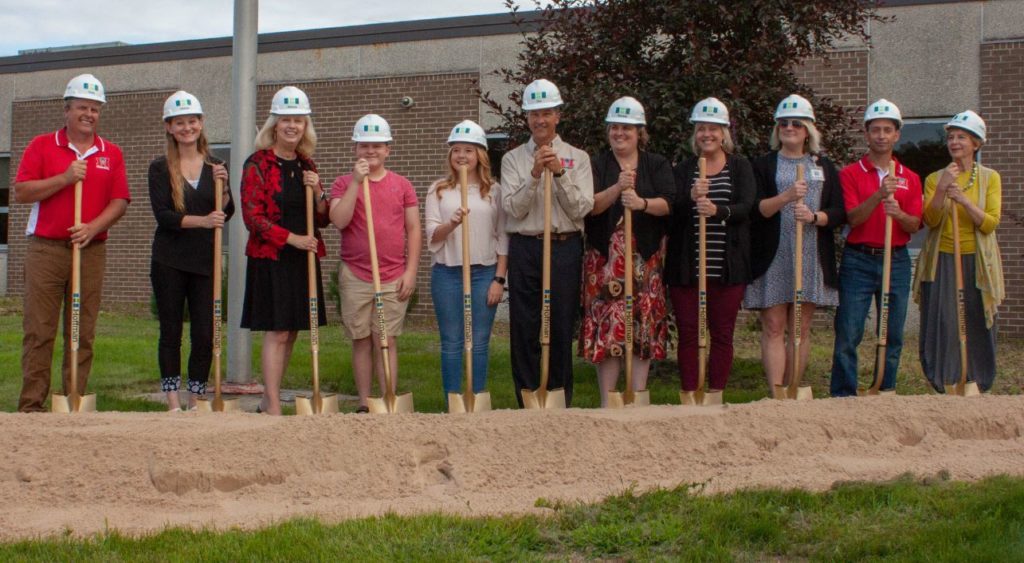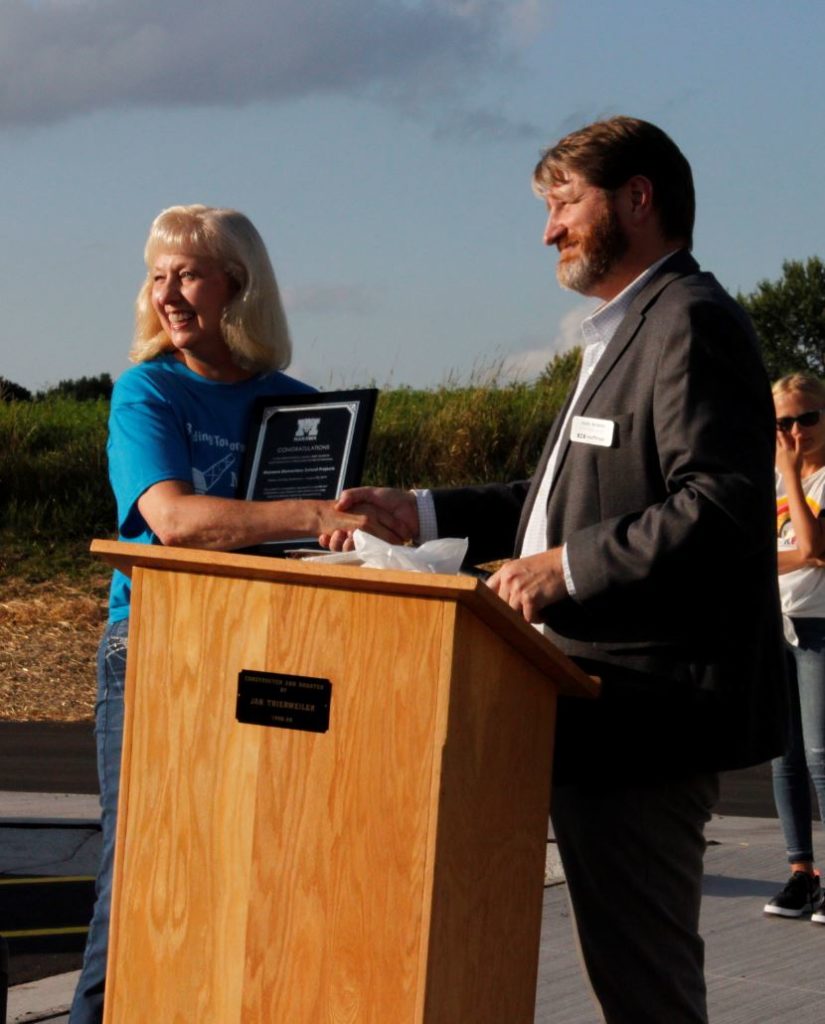“Trust is the glue of life. It’s the most essential ingredient in effective communication. It’s the foundational principle that holds all relationships.”
Stephen R. Covey
When trust is broken between a community and its school district, it is difficult to be aspirational. Inadequate and failing facilities can be a trust breaker between school districts and the people they serve but it takes money to replace aging facilities and meet growing demands. Before you can move forward, it’s important to work on rebuilding trust and reviving and repairing strained relations.
That was exactly where we found ourselves at The School District of Manawa (Wisconsin). We had big needs, with a significant price tag, but the community had lost trust in the school district—and for good reason. While the current administration had inherited a difficult situation, we were up for the challenge. A successful referendum was imperative to move the district forward.
WHERE DO WE START?
In 2017, the Manawa school board attended a convention and heard an inspiring message from David Horsager, CEO of Trust Edge Leadership Institute. His speech was just what was needed, considering the history of issues both within the district and across the greater community. The board and school administrative team set out to conduct a joint book study of “The Trust Edge” by Horsager in order to establish goals and create solutions for our own problematic situation.

After studying the book and the situation we found ourselves in, we were determined to concentrate on three key aspects that the book presented– clarity, connections, and consistency. These three areas of emphasis provided us with a roadmap to restoring trust, but we also had to produce successful educational outcomes.
A COURSE FOR EDUCATIONAL ATTAINMENT
The School District of Manawa has been working with trainers from Cooperative Educational Service Agency for nearly three years, focusing on developing and implementing its 7 Principles of Improvement. These vital elements are:
- Make the work user-centered and problem-specific.
- Identify what works, for whom and in what circumstances.
- Experience what produces the current outcomes, don’t just read or hear about it.
- We can only improve and scale up what we can measure.
- Engage in rapid cycles of Plan, Do, Study, Act to learn fast, fail fast, and improve quickly.
- Hasten improvement through discipline and collaboration.
- Foster a mindset of constant improvement.
Having a framework for trust and a process for rapid improvement provided us with common language to use and a road map from which to work.
Having a framework for trust and a process for rapid improvement provided us with common language to use and a road map from which to work. However, we knew we couldn’t do it on our own.
PARTNER PAIRING
Choosing a knowledgeable partner for a referendum is essential to victory. The relationship between the planning, design, and construction personnel and the school district is crucial and that relationship proved to make all the difference for success in Manawa. Communication is important in any project, but when trust has historically been lacking, it becomes a top priority.
Communication was boosted in the following ways:
- The district administrator and the business manager held weekly project status meetings.
- The district’s social media platforms and website, along with gallery walks and presentations to community groups, informed the public about project progress.
- Focus group meetings with key stakeholders influenced design decisions that ensured the finished project met the expectations of the district, staff, and facility users.
- Daily on-site personnel addressed emerging issues in real time and managed contractors’ progress to minimize unwanted “surprises.”
One example of how these practices advanced the project, and continued to build trust, was when fierce storms moved through the region during the summer of 2019. High winds tore through the area. Construction fencing and building materials were scattered and mangled. The Senior Project Manager—and his family—came to the site and joined school personnel in making the site safe and functional again. It was later realized that the manager’s family was without electricity at their own home yet focused on the district’s needs first. As the local community heard of that selfless act, the story spread, and the behavior became another source of trust-building with constituents.
Another instance of the impact of quality communication came from a resident when the district team led the first listening sessions and conducted its initial survey on perceptions of the school. This participant stated, “No one has ever asked our opinion before.” This administrative team and board wouldn’t think of proceeding without asking for stakeholder input; but it was an essential component that had been left out previously.
TRUE PARTNERSHIPS
When a partnership has been established with a firm to help with a referendum, there are multiple stages required before you see a completed construction project. The phases include study, pre-referendum, referendum, design, construction, and completion. The construction project team works with the district throughout each stage.

From the outset, all parties (the project design team, the school board, the district administrator, and the business manager) should establish how decisions will be made by the district and shared with the project team, along with who is authorized to make which decisions. Defining this chain of communication at the very beginning enables everyone to plan accordingly and keep the processes flowing smoothly. This same group, minus the school board, met weekly to discuss issues as they arose. This was key to keeping the construction on track and everyone informed at all stages of the project.
Follow-up meetings were used to verify that the designs as drawn fit the previously stated needs.
Additionally, design personnel met with district staff and community stakeholders representing various departments or learning spaces in the development phase to ascertain the needs of the facility users. Follow-up meetings were used to verify that the designs as drawn fit the previously stated needs. Examples include many details—such as coordinating the desired numbering sequence for the lockers and determining where specific pieces of furniture or equipment would be placed to optimize data and electrical connections. This level of collaboration provided opportunities for stakeholders to voice concerns and get issues resolved to ensure student learning environments were enhanced and staff had work environments that were both practical and functional.
In addition, the district and the project team developed an “Add Alternate Options” list. It included items that did not fit within the $12 million budget but may be fundable through investment earnings or unused contingency dollars. We used the following criteria for pursuing these alternatives: impact on learning, infrastructure, health & safety, and cost.
RECOGNIZED SUCCESS
This process and partnership worked, and the Manawa School District was able to pass two referenda. The initial $12 million capital improvement plan will enhance the learning environments at both the elementary campus and the middle/high school for years to come. The second referenda was for a one-year non-recurring operational referendum to tear down an unused school building on adjoining property and return the land to green space until the district defines future construction needs. To be successful we can say with conviction, trust is a must!

